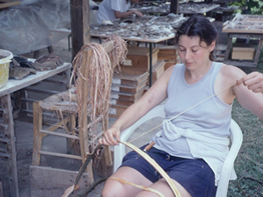Experimental Archeology
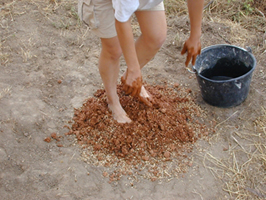
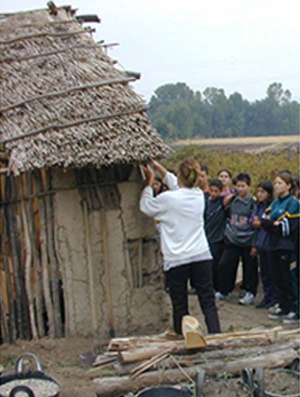 Since 1992, several experimental programs have been carried out in order to test the validity of observations made on archaeological material. They have concerned, among other things, the construction techniques of different parts of a house (wall, roof, and floor) and the various pieces of equipment found in the settlement (ovens, hearths, and bins). Through these experiments we tried to confirm or refute a number of hypotheses regarding both the choice of raw materials (clays and plants used as non-plastics, such as husks) and also how these materials were processed prior to use. For instance, we have experimented with hulling whole wheat to obtain husks, mixing or kneading soils for the preparation of building clay, and the preparation of cords from tree-bark used for fastening wooden parts together. The experiments confirmed the use of a technique for the construction of walls that previously was poorly known, wherein joint posts were covered with building clay. They also gave further insight into the various steps of the operational sequences (chaînes opératoires), especially those concerning combustion structures. We also reproduced various types of bins, with walls constructed on a wooden frame or built with coils. Many tools and actions involved in the shaping and surface treatment of various features were put to the test (for example, smoothing an oven’s floor with a bone tool, a sherd, a pebble, or by hand.)
Since 1992, several experimental programs have been carried out in order to test the validity of observations made on archaeological material. They have concerned, among other things, the construction techniques of different parts of a house (wall, roof, and floor) and the various pieces of equipment found in the settlement (ovens, hearths, and bins). Through these experiments we tried to confirm or refute a number of hypotheses regarding both the choice of raw materials (clays and plants used as non-plastics, such as husks) and also how these materials were processed prior to use. For instance, we have experimented with hulling whole wheat to obtain husks, mixing or kneading soils for the preparation of building clay, and the preparation of cords from tree-bark used for fastening wooden parts together. The experiments confirmed the use of a technique for the construction of walls that previously was poorly known, wherein joint posts were covered with building clay. They also gave further insight into the various steps of the operational sequences (chaînes opératoires), especially those concerning combustion structures. We also reproduced various types of bins, with walls constructed on a wooden frame or built with coils. Many tools and actions involved in the shaping and surface treatment of various features were put to the test (for example, smoothing an oven’s floor with a bone tool, a sherd, a pebble, or by hand.)
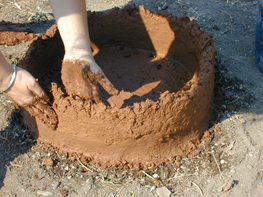
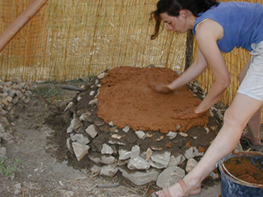 Finally, we also experimentally analysed the function of ovens and hearths, measuring the temperatures they attained during heating. Micromorphological and physico-chemical analysis permitted the comparison of the experimental results with those from archaeological examples, thus confirming or challenging some of the aspects of the experiments.
Finally, we also experimentally analysed the function of ovens and hearths, measuring the temperatures they attained during heating. Micromorphological and physico-chemical analysis permitted the comparison of the experimental results with those from archaeological examples, thus confirming or challenging some of the aspects of the experiments.
